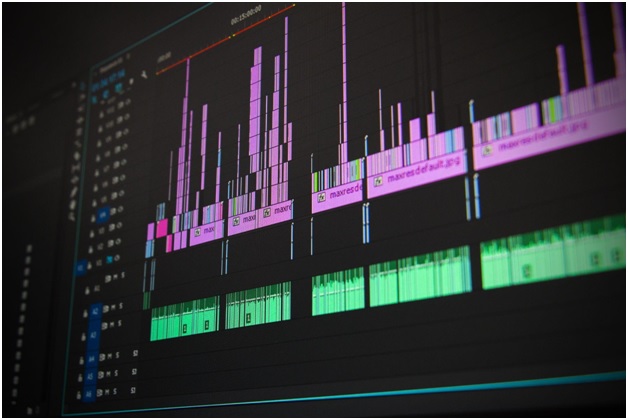
Last updated on : March 21st, 2022 by R Yadav
The digitalization of almost every industry has brought rise to the prominence of digital content creation. Instead of pouring funds into printed media for marketing or internal communications, businesses and organizations are instead opting to invest more into digital content, especially video. The demand for digital creatives is higher than ever, and video editing skill is among the most valued among talents.
Whether you want to learn video editing from scratch or seek to polish what you already know, the fundamentals are always a good place to start. This article will discuss the basics of video editing to help aspiring video editors start their journey right.

From simple video editors like Windows Movie Maker to the most feature-rich ones like Adobe Premiere Pro, you have plenty of software to choose from. There isn’t a definitive “best” video editing software, so you’ll have to do your research and try out options to get a feeling of how they work. Rest assured, there’s a video editing software that would suit you best.
Once you’ve found the software you’re most comfortable with, use it for all the video editing tasks you tackle. The more you use it, the more you’ll get familiar with its tools, features, shortcuts, and quirks; you’ll be able to do a lot more on your projects as you progress. There are also video tutorials online you can refer to if you find yourself in a pinch.
Wading through hundreds of gigabytes of raw footage or recording can be confusing and make the video editing process more difficult than it should be. Always make it a habit to organize all imported video clips by storing them in a project folder with subfolders for reach type of raw files. Naming files will also help you determine which is which when you start browsing through them. It’s also good practice to delete clips you don’t want, such as poor camera angles, blurred takes, bad-audio clips, or downright mistakes. Organizing all the files for a project before beginning editing will save you plenty of time down the line.
Before you begin editing, it’s vital to have a script that can hold people’s attention. No, you won’t be writing a story with characters, dialogue, and whatnot. You’ll be writing a script that answers the following questions: What will your video do? And who will watch it? Knowing the answer to these questions will guide you when you start editing. Understanding your video’s objectives and target audience helps you tailor your editing to what piques their interest.
Once you know your target audience, make sure your script speaks to them. You know their background, and why the video is of any interest to them, so you’ll be able to predict what types of thoughts, questions, and feelings they’ll have throughout the video. Make sure to address them.
Your script should focus on a single idea at a time. Determine the key idea of the project and place it at the center. If there are multiple key themes, tackle them one by one. Doing so will help you make videos that are concise and easy to understand.
Raw takes are full of dead air and parts not meant to be included in the final product. Some clips will end too early, while some will end too late. You need to trim them. This is one of the easiest parts of the video editing process. While It can be time-consuming, it’s necessary for quality. Cutting out unwanted parts from clips will help you achieve the polish you want when you finish the project.
Applying effects and color schemes are some of the more enjoyable parts of the video editing process, and it’s also among the most important. The effects you use, from simple transitions to more flashy ones, will dictate whether the project will feel dynamic or stiff. The roster of effects you have access to will depend on what software you’re using, but what matters more is that you know how to get the most out of them.
Colors, meanwhile, have a direct effect on people’s perceptions and moods. You have a unique perception of colors based on your cultural background and life experiences, but you shouldn’t let this be the major influence in your video editing. As the editor, you should always keep your audience in mind and use color schemes that speak to their perception. Moreover, you need sufficient knowledge of color theory to pull off the perfect color schemes for each project. Lastly, you need to familiarize yourself with the two main color systems used in video editing: RGB and HEX.
Video clips will make up the bulk of every project, but no project is complete without high-quality audio and images. You want to use images of the same resolution as the project itself. You would also need to dabble into photo editing and get familiar with software like Adobe Photoshop and Lightroom.
Like colors and effects, the audio quality of the project will greatly impact the final results. Finding the right music to match the clips will take some practice, and you must make sure you’re not using music you don’t have the right to. There is plenty of royalty-free music online that you can use for your projects.
A masterful work of video editing can be sabotaged by being rendered into an improper format. The most common video formats are MP4, FLV, and WMV, but there are dozens more, and you need to know which one is the best for your project. Do your research and study the wide variety of video formats so you can be on your way to formatting like a pro.
Video editing can feel overly technical, but it isn’t as complicated as you think. Once you get the hang of the basics of video editing, you’ll enjoy the process more, and it should get easier.
Read Next Article: How Do You Integrate Technology Into Math Classroom?